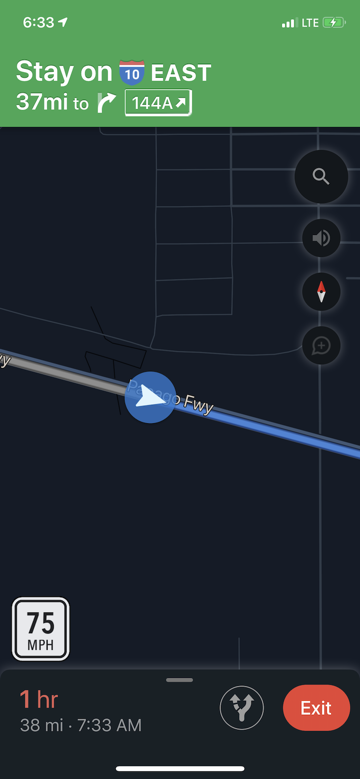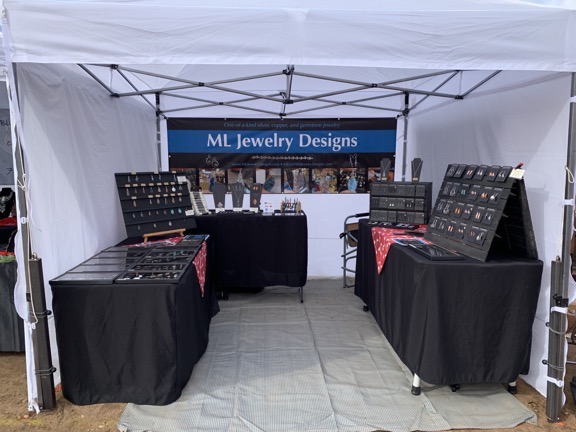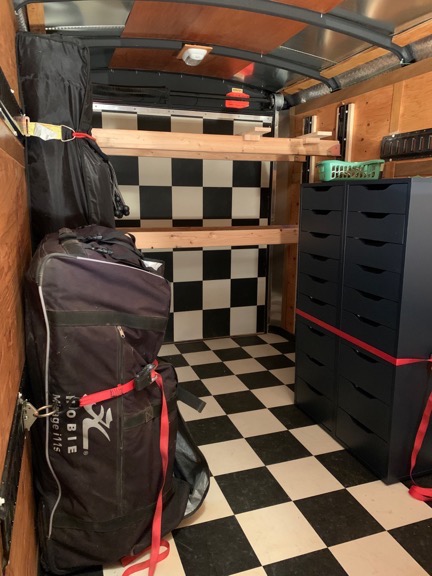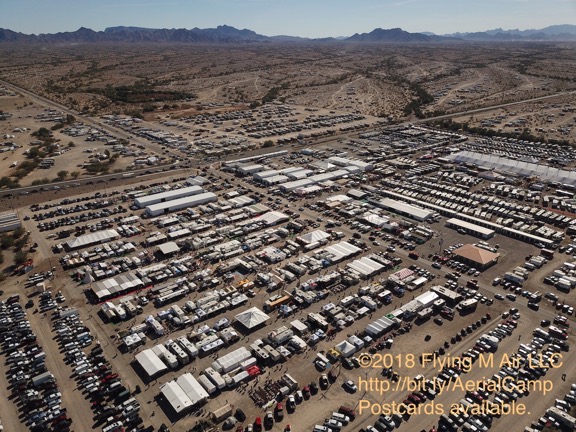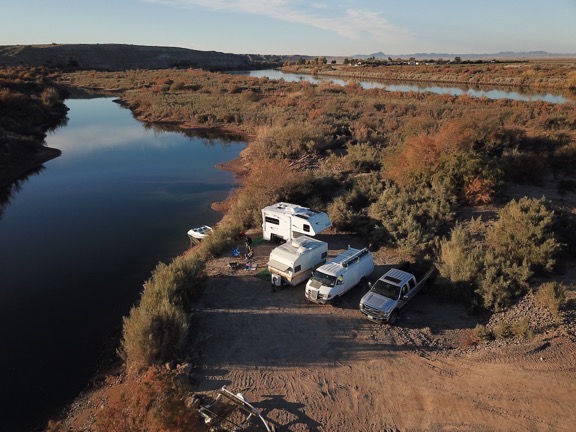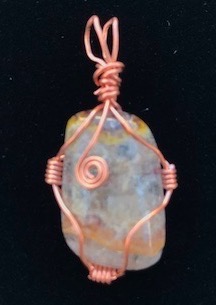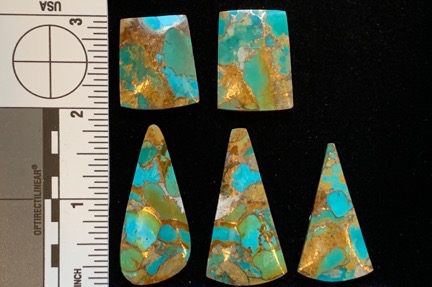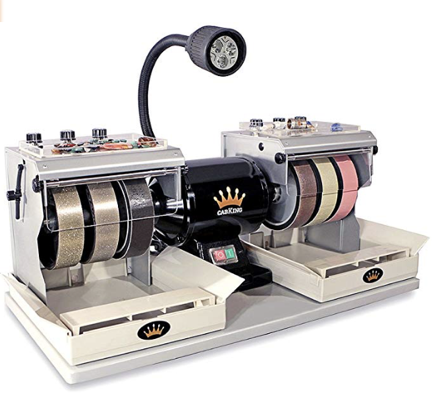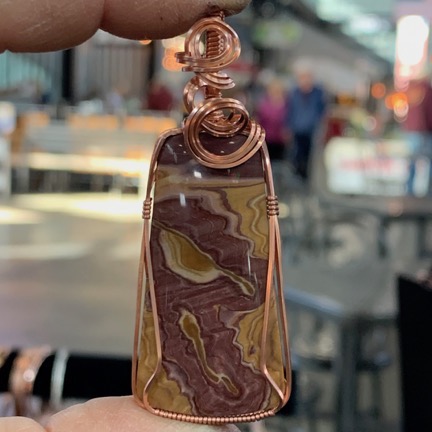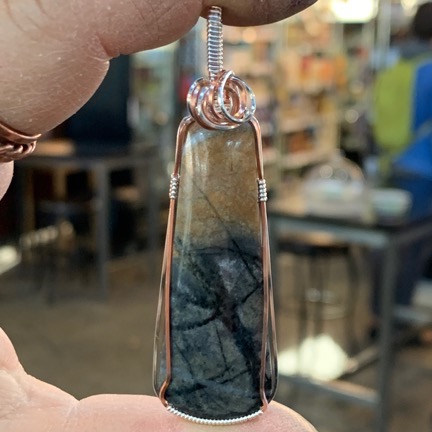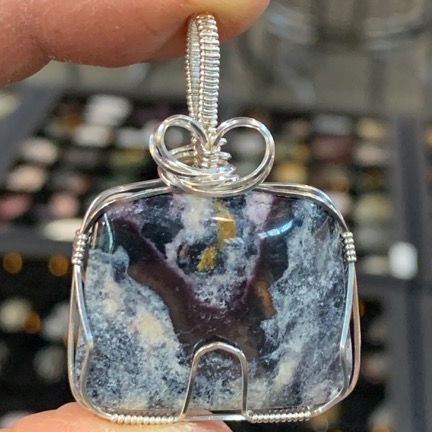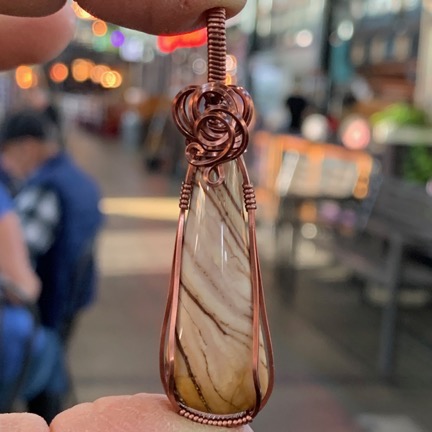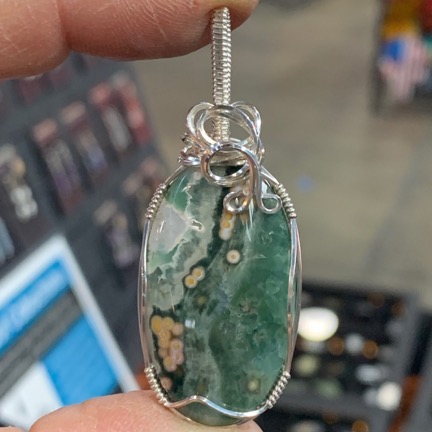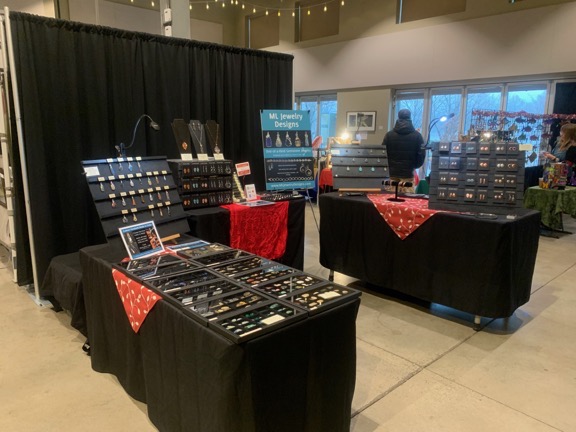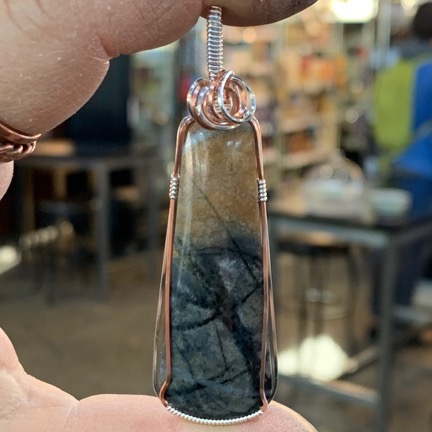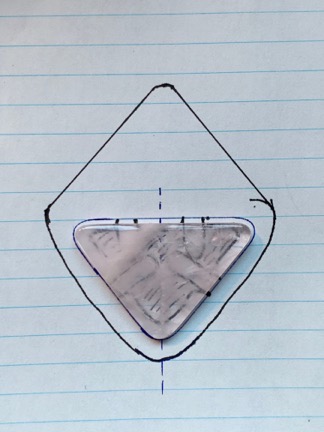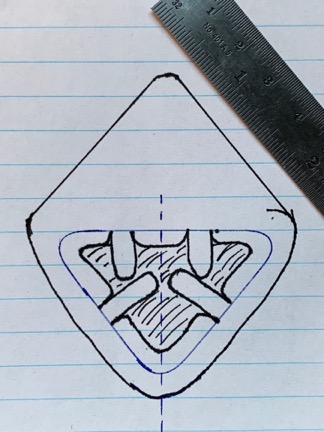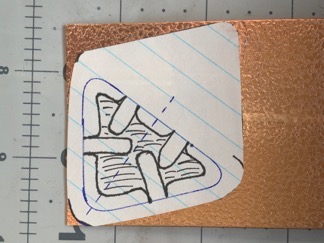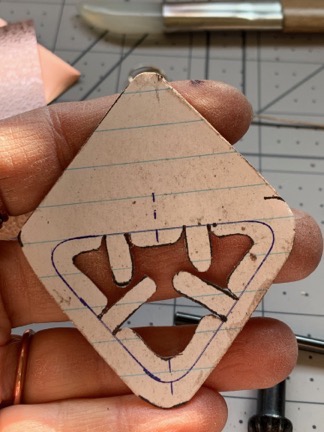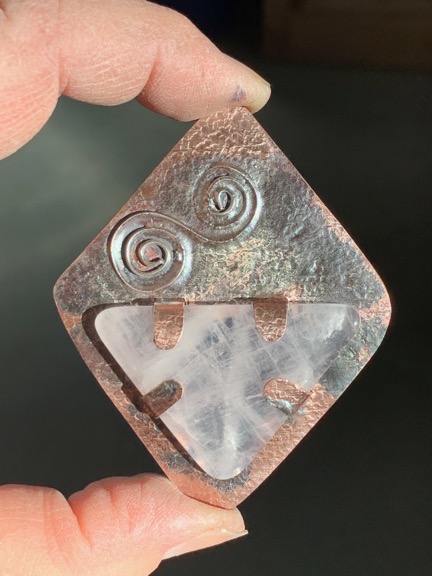My stone collecting obsession and how I’m trying to move forward.
Let’s get one thing straight from the get-go: I like rocks and always have. I’ve collected interesting rocks since I was a kid. You know — like when you’re out on a walk and you see one on the ground that catches your eye and it winds up in your pocket and later on your dresser.
Or when you’re on the beach with your family and you wind up picking up more rocks than shells and you keep them in a jar of water at home so they stay wet and shiny but become an algae-filled science experiment that disappears one day while you’re at school.
Or even in the school playground one afternoon in the 1970s when Steven Gaydos claims to have a moon rock and sells it to you for $2. (Yes, I was one of his suckers.)
Buy my jewelry!
After being encouraged (or nagged?) by too many other artist friends, I finally opened an Etsy shop to make it easy for folks to buy and for me to sell my finished pendants. It’s called
MLGemstones. What I like about selling on Etsy is that it’s relatively easy to keep up-to-date — I can add pendants as I make them and remove them as I sell them — and Etsy does all the work to create for receipts and postage labels and calculate and pay sales tax.
Even when I got older and into a relationship, I collected pretty rocks. My future wasband did, too, which I always thought was natural. We’d go out in the desert and come back with a bunch of rocks. One day, while Jeeping out near Congress, AZ, we came upon a really nice, almost perfectly cubed piece of white quartz. It took three of us to get it in the back of the Jeep and it wound up in the front yard of our home. (It later disappeared; I don’t know if my wasband took it or someone looking at the house during the years it was for sale took it. I certainly had no use for it.)
Quartzsite Makes it Serious
Every year, when I lived in Arizona, I’d take at least one trip out to Quartzsite during the January rock shows. I exercised a lot of self-control in those days, but I did come home with rocks now and then. I had, by that time, seen the pattern of my rock acquisitions: find, bring home, set aside, lose, repeat. It made no sense to pay money for something I’d too quickly lose interest in.
After I moved to Washington state, I’d still go down to Quartzsite as part of my winter migration. And one year, I caught the rock bug bad.

It’s almost embarrassing to share this photo of my second pendant, but sometimes you need to look behind you to see how far you’ve come. I recently found this pendant (after misplacing it for a year) and plan to reframe it and wear it as a reminder of the rock that started it all.
It started with a rock seller giving me a nice, polished bacon agate cabochon. I had to do something with it. That’s when I started playing around with jewelry making. I was awful back then and never realized that I would get better. All I thought about then was that now that I had something useful to do with the rocks, it made sense to buy a few.
A few hundred, is more like it.
The Growing Collection

Kingman Turquoise with bronze is one of my best selling stones these days. I get these from a lapidary in Pennsylvania.
Since then — which was only two years ago this coming January — I’ve not only added to my collection, but I’ve begun displaying the stones in Riker boxes with felt inserts. Each box has a type of stone: jasper, agate, moss agate, jade/opal, turquoise/chrysocolla/azurite, etc. Each stone is meticulously inventoried with a tiny sticker on the back with its name, inventory number, and selling price. Yes, I now sell cabochons, too. I have become a rock dealer.
I get about half my stones in Quartzsite or Tucson every year. Honestly, I get better deals in Quartzsite so that’s where I mostly shop, starting as early as December.
I get another 45% of my stones from lapidaries — people who polish stones into the cabochons I use for my jewelry.

I bought one of these so I could polish local stones.
The final 5% are made in my shop. When I got rock fever bad enough, I bought a CabKing 6 cab making machine. I have a very large supply of local petrified wood and obsidian that I got in trade from a client. They both make very nice cabochons — when I have the time to polish them. Of course, once I got the machine, I started acquiring slabs of rock from all over the world so I could make my own cabochons. Unfortunately, I’ve been having trouble finding time to do that.
Selling Stones
My cabochons range in acquisition price from $1 to $20. I obviously sell them for more than that. I have them on display at venues where I sell my jewelry. I get a lot of rock lovers stopping by to look — some of them can spend 15 minutes or more at my booth looking and chatting with me. I enjoy sharing my knowledge and learning from some of them. And I love hearing their stories! I don’t even mind when they take up a bunch of my time and don’t buy anything. (The only thing I do mind is kids with dirty hands touching the tops of the display boxes. 🤯)

This Fallon Nevada Wonderstone was one of the first “expensive” rocks I bought. I think I paid $15 for it. The pendant sold for $79 the other day.

This was the first Picasso stone cabochon I bought and I think it was the nicest. It sold last weekend.

This was one of the first 100 stones in my collection. I’ve since learned that square stones are a tough sell, but I suspect this one will eventually find a home.

I obtained this petrified wood cabochon long before I got about 100 pounds of local petrified wood in trade with one of my clients.

I remember the day I bought this Ocean jasper cabochon and another very much like it in a Sacramento, CA bead shop. I paid too much (as I now know) but got my investment back (and more) when it sold last weekend.
Although the main reason I have the stones on display is to entice shoppers to have a custom pendant made from one of them — I can do it while they shop or have lunch — I also wind up selling a lot of stones. Just last February, I sold 20 stones over two days to a woman in Wickenburg, AZ — she came to my booth twice — and one day this past summer I sold 18 stones to a woman in Leavenworth, WA. These sales are good and bad. They’re good because I’m making money on inventory that requires no work other than cataloging and transporting. They’re bad because these folks often pick my best stones, leaving me with ones that aren’t quite as interesting or impressive. (Of course, that gives me an excuse to buy more.)
And then there are the folks who buy out my entire stock of one particular stone. I’ll see these folks at rock shows, like the one I do in Mesa, AZ every January. I discount all my cabochons by 20% to stay competitive with other rock sellers at the event. One day, a guy bought all of my K2 granite stones and the next day another guy bought all my bumblebee jasper stones. Fortunately, I went right back to Quartzsite the day after the show and was able to replenish my supplies.
Digging Deep
My stone inventory is listed by date and I still have a bunch of stones from my early days of collecting them. I’ve begun making a conscious effort to get these stones out of my inventory by making them into jewelry. And that’s what I’m showing off here: photos of stones I’ve had in my collection for over a year that I’ve finally made into jewelry.
It’s interesting to note that I started writing this blog post earlier this month when I began making these pendants. Since then, three of the five have sold. That tells me that even back when I first started collecting I had pretty good taste in stones.
Over time, I’ve learned what sells quickly and, when I get to Arizona, I’ll be stocking up on those stones. But I’ll also be on the lookout for some other beauties that I won’t be able to resist. When I find a stone I really like, I price it so high that no one wants to buy it so I can keep it as long as possible. But everyone seems to have their own idea of how much is too much and I often sell them to collectors anyway. That’s okay; it funds my future collections.
As for my current status, after buying and selling stones and pendants made from stones for nearly two years, I have 370 cabochons in my collection. Is it any wonder that rock lovers stop and stare when I have them laid out in my booth for everyone to see?

My stones get their own table when I set up my jewelry booth at shows, like this Holiday Artisan Fair in Wenatchee last weekend.
